Northern Vietnam
Hanoi Captital
Mai Chau
If you’re on social media, you will easily come across videos of tourists showing off their wonderful experiences at the Ha Giang Loop, Vietnam, going viral.
So what’s about this place that makes it so popular with tourists? Let’s find out with Fola Travel!
Ha Giang Province is the northernmost point of Vietnam, boasting a terrain dominated by rugged rocky mountains. The winding roads of Ha Giang, leading from high hills to deep valleys, across vast fields and dreamy rivers, have gradually become a local specialty.
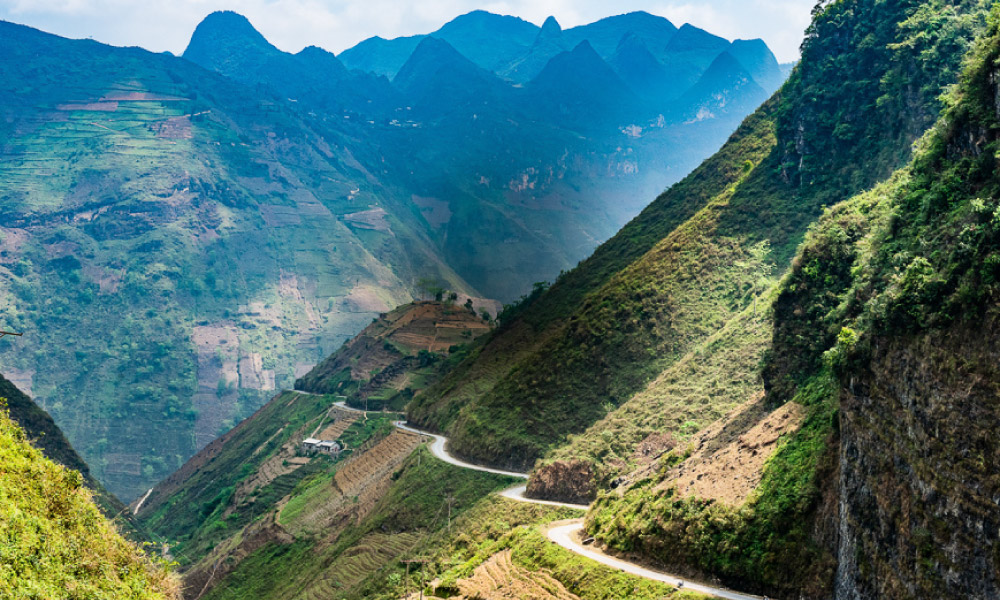
These mountain roads, over time, have put the name of Ha Giang on the domestic and international tourism map: Ha Giang Loop is considered one of the most beautiful motorbike routes in the world, revered by travel enthusiasts as a must-have trip in life.
The rustic, unadorned beauty of Ha Giang’s nature will effortlessly captivate all visitors.
As they arrive in Ha Giang, their eyes would instantly be drawn to the endless range of rocky mountains expanding to the horizon, with a silver gray surface scattered with the dark green forest. Beyond the rocky mountains, the rugged landscape gives way to rolling green hills, gently sloping down to tranquil valleys, where small villages with bamboo roofs nestle together.
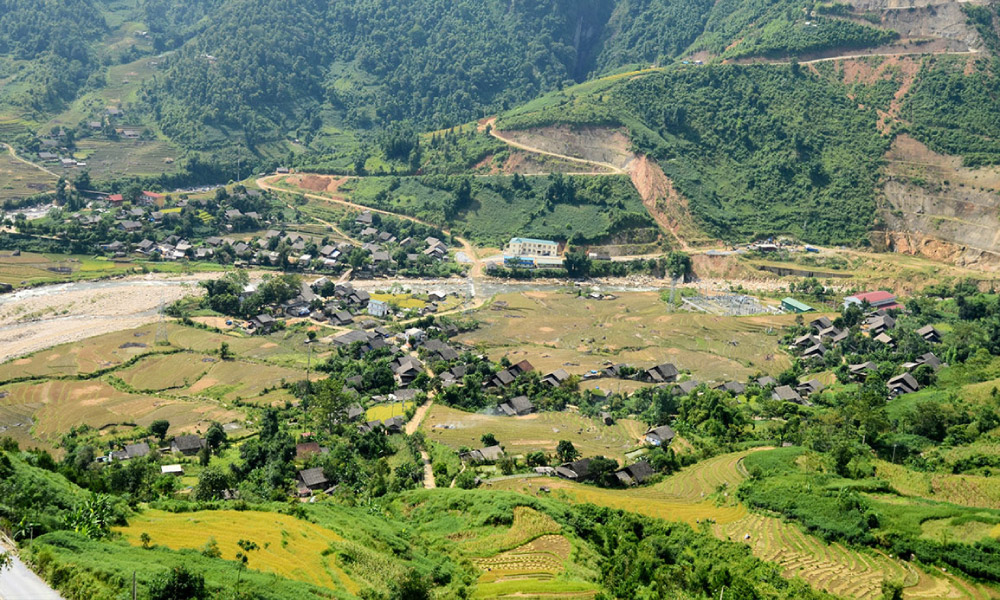
Ha Giang’s charm, besides the stunning natural beauty, is deeply rooted in the unique cultural identity here.
This land is home to nearly 20 distinct ethnic minority groups, each preserving its own intricate customs and traditions. Despite their differences, what Ha Giang people all have in common is their friendliness and hospitality. Visitors here will encounter children on their way to school, or farmers leading buffaloes to the rice fields, all offering radiant smiles and welcoming waves.

Ha Giang’s cultural tapestry is rich and colorful, like the intricate garments worn by its women. The traditional practices of each ethnic group here are deeply unique, for example, the Mong people is renowned for their Khen dance, the Dao people practices many spiritual rituals, and the Tay people uphold the traditional Then singing.
Visiting Ha Giang during traditional festivals will provide visitors with an immersive cultural experience.

Admire the beautiful spring flower fields from March to May
Spring is the season of blooming flowers on the hillsides of Ha Giang, creating the most lovely and poetic backdrop for your check-in pictures!

Bedazzled by the pouring water season from June to August
Summer is when local farmers go to water their rice seedlings. The scene of flooded terraced fields sparkling under the sunlight brings a shimmering beauty that cannot be found anywhere else.
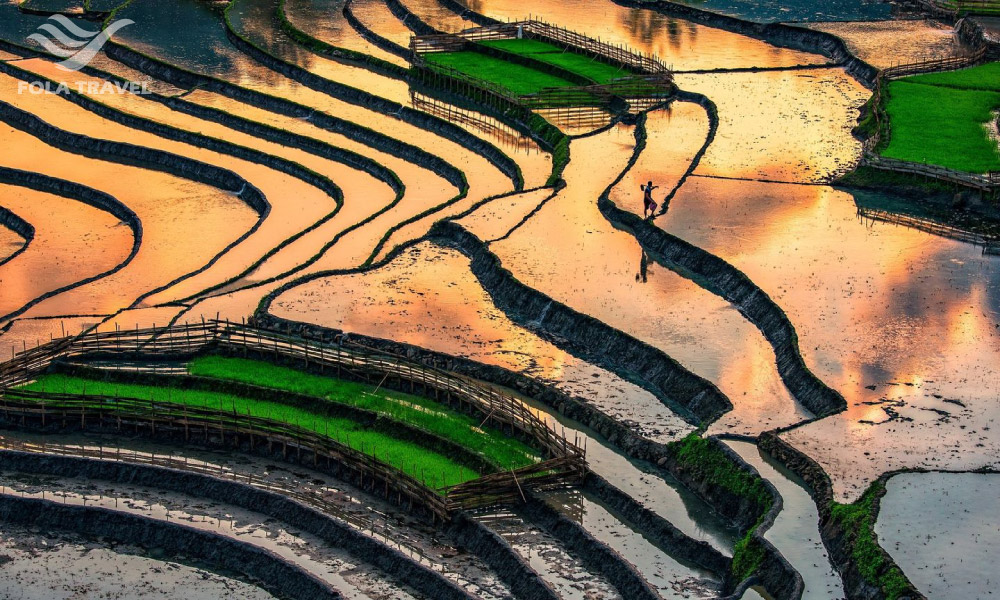
September to November: enjoy the rice harvest season
Fall is the famous harvest season and is the best time to go on a Ha Giang tour. The golden rice terraces dazzling on the hillsides create a simple yet captivating picture of Ha Giang nature.

Experience “cloud hunting” in Ha Giang from December to February
Visiting Ha Giang in winter, an activity you must do is mountain climbing to admire the mysterious natural scenery of mountains and clouds.
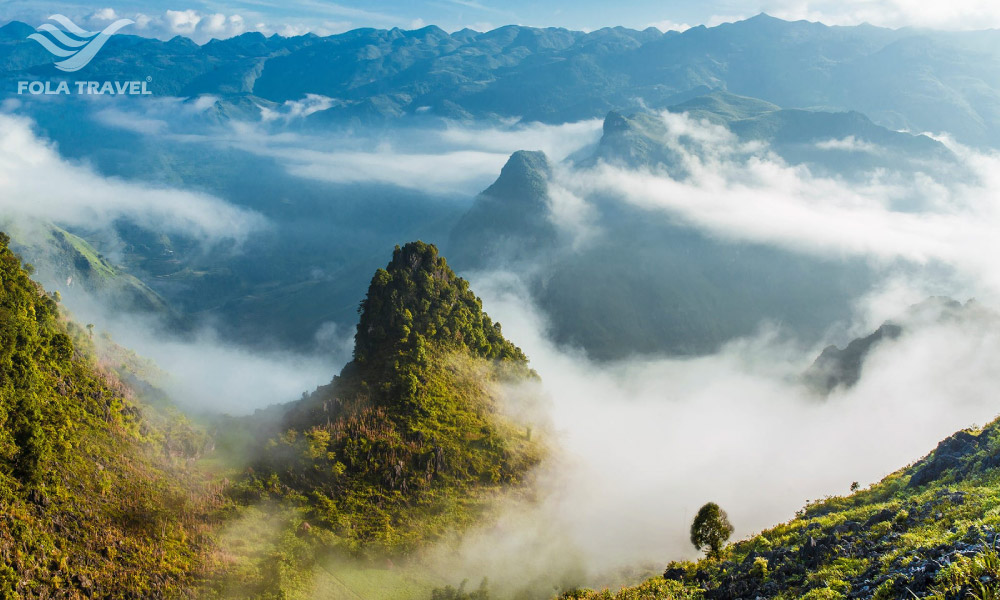
Thanks to many direct bus and coach routes, Ha Giang can be easily accessed from the northern provinces of Vietnam. If you feel more daring, you can drive yourself there or even ride a motorbike. Do notice that the road is lengthy, about 300 kilometers from Hanoi to Ha Giang, so only go for it if you are a stable driver.
In Hanoi, many buses depart hourly from various bus stations in My Dinh, Luong Yen, and Gia Lam… for you to choose. The ticket for a night bus from Hanoi to Ha Giang ranges from 200,000 – 300,000 VND per way.
Getting to Ha Giang from Vietnam’s central or southern regions is more difficult. Fola Travel recommends you fly or take a train to Hanoi, then start your Ha Giang journey from there. Once you reach Ha Giang, you can get around the city and countryside by car or motorbike, depending on the tour.
With Fola Travel’s Ha Giang tours, all transportation to and inside Ha Giang is included and presented clearly in the package, so you can explore this wonderful land without another thing to worry about!
See more: Best Ha Giang Loop tours & packages for your 2025 trips.
The highlands of Ha Giang provide a perfect opportunity to immerse yourself in the natural surroundings. Accommodations in Ha Giang will impress you with the lovely ancient architecture, authentic local experience, and of course, the magical scenery outside the windows.
For more high-end options, the private P’apiu Resort or Truong Xuan Resort Ha Giang are two popular names. Here, you can stay in luxury villas, enjoy the most relaxing services like indoor spas, and try authentic Ha Giang cuisine. The price for a night’s stay is about 10,000,000 VND.
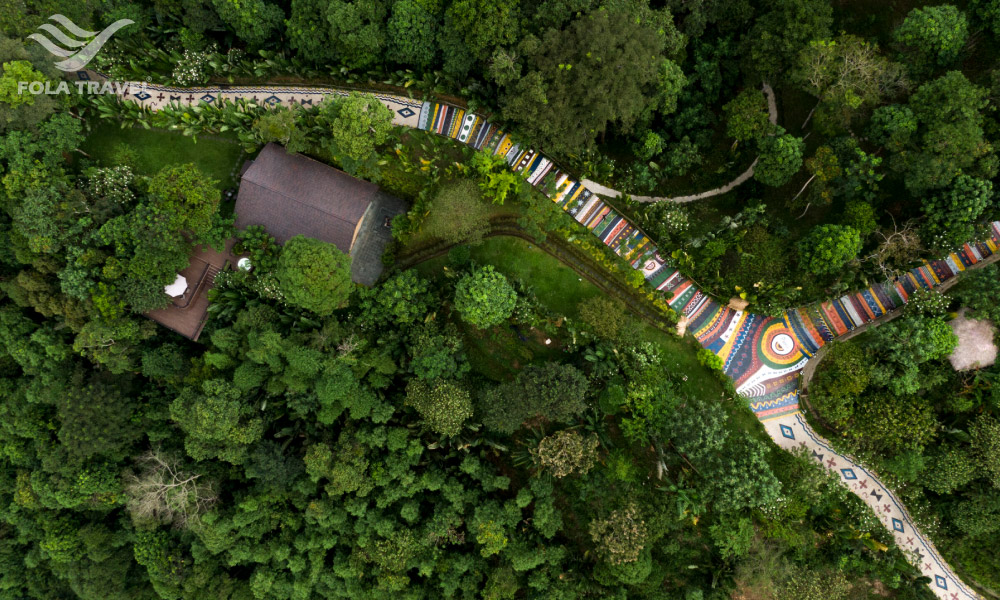
For visitors who want to stay closer to the Ha Giang ethnic villages, a homestay would be the perfect community-friendly and low-cost selection. The price for one night here ranges from 100,000 to 400,000 VND. Some great choices include Hoang Su Phi Lodge, Lo Lo Ancient House, and many more.
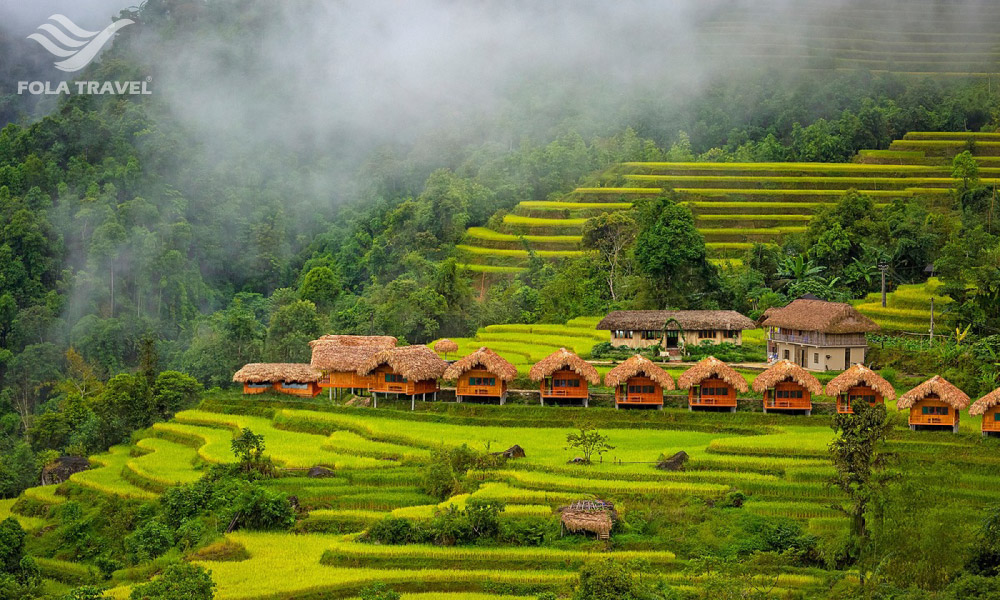
Dong Van Karst Plateau Geopark
This UNESCO Global Geoparks Network site spans four districts in Ha Giang province, with an area of over 200 square kilometers. The place is covered by clusters of rocks in all shapes and sizes, creating a spectacular landscape like a stone exhibition held by nature.
Learn more: Karst Geopark in Dong Van District.
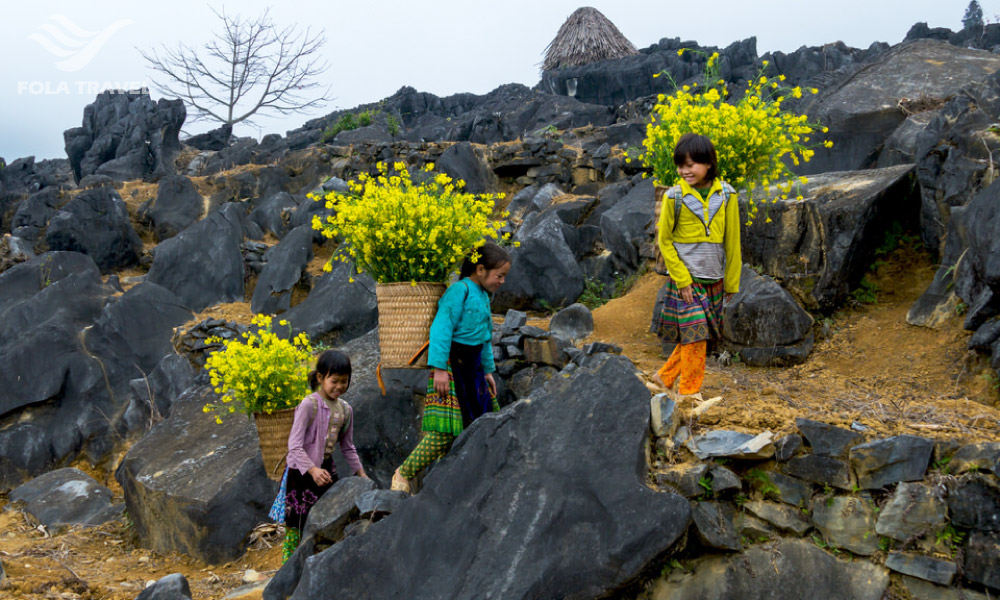
Mountain Passes
Ha Giang is famous for its winding mountain passes overlooking the majestic natural landscape of vast mountains and forests. The Ma Pi Leng, Tham Ma, and M-shaped passes are challenging trails often included in Ha Giang packages, attracting the attention of many adventurous tourists.
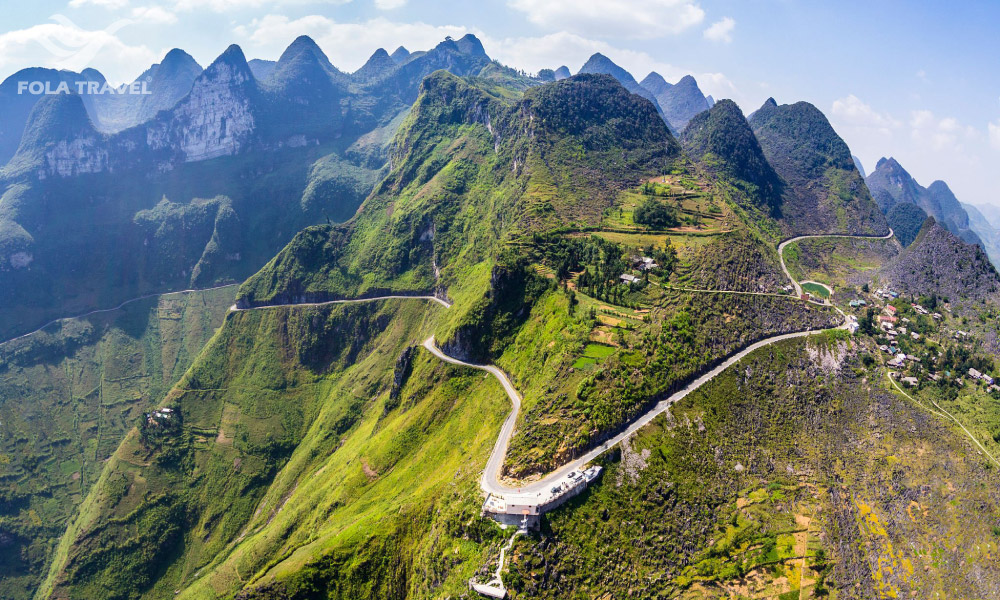
Quan Ba Heaven’s Gate & Twin Mountains
Quan Ba is the first gateway on the Happiness Road to conquer Ha Giang Loop, famous for its breathtaking panorama at Heaven’s Gate. In Quan Ba, visitors will experience the thrilling excitement of motorcycling overlooking the beautiful Twin Mountains!
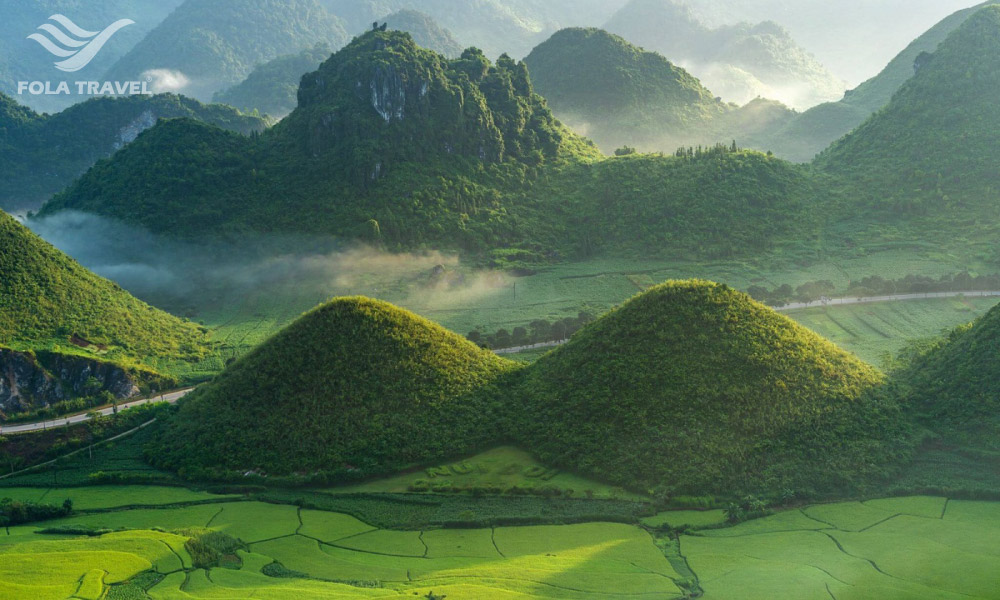
Surrounded by gentle hillsides covered with terraced fields, Yen Minh draws tourists with the serene and lyrical beauty of the primeval pine forests and the fascinating traditions of local people.
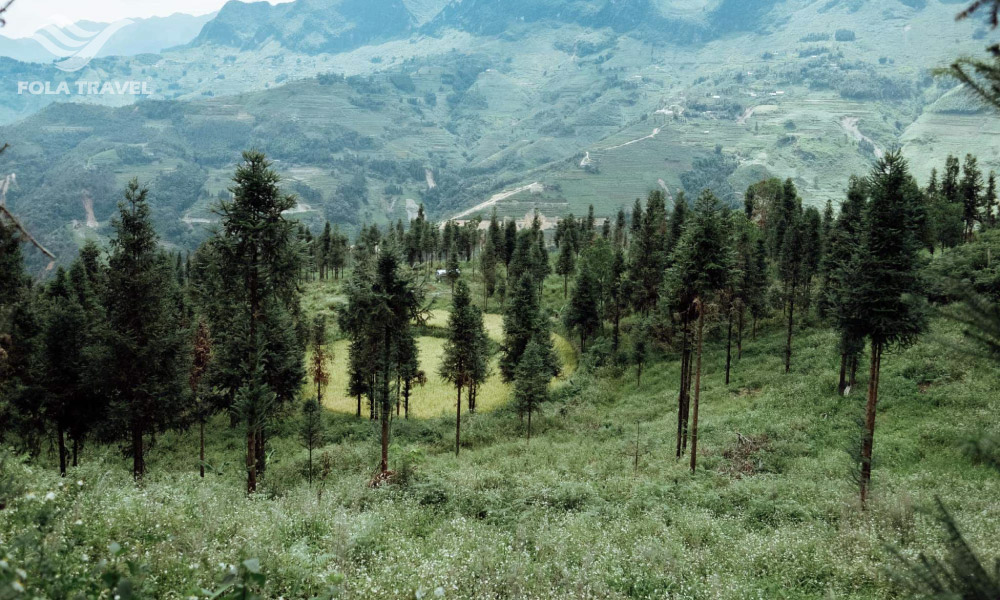
Winding at the foot of Ha Giang Loop, Nho Que River is blessed with a year-round emerald green color, standing out among the towering rocky mountains of Ha Giang!
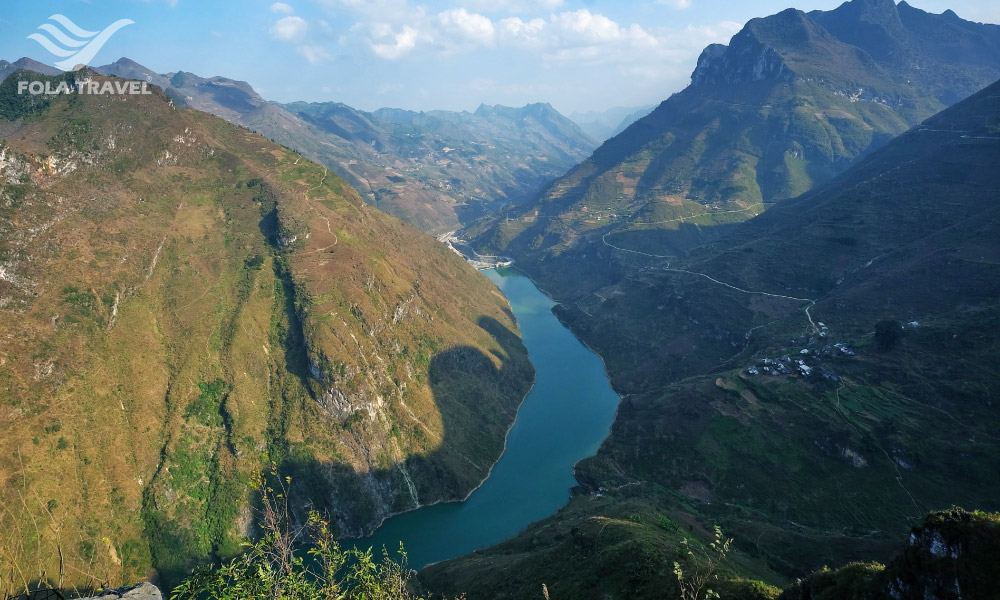
Coming to Dong Van Ancient Town on a Ha Giang tour, you will feel transported back in time with the old small bamboo roofs, the aroma of local specialties, and the colorful traditional markets.
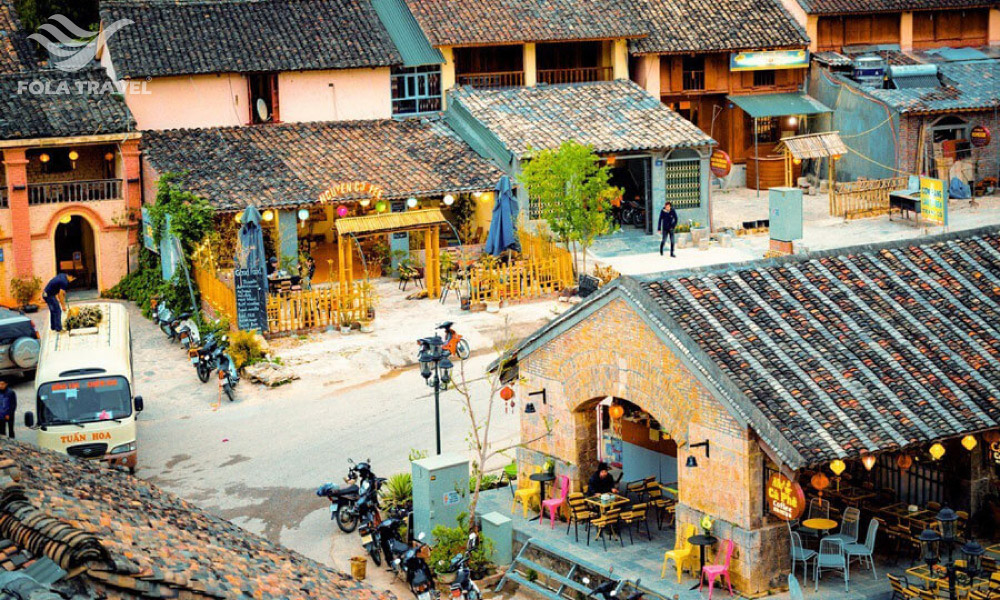
This is the northernmost point of Vietnam, built in 2001, symbolizing the strong will of the local people to protect their homeland. Standing on the flagpole, you will be overwhelmed by the breathtaking picture of the mountains and forests of Ha Giang countryside.
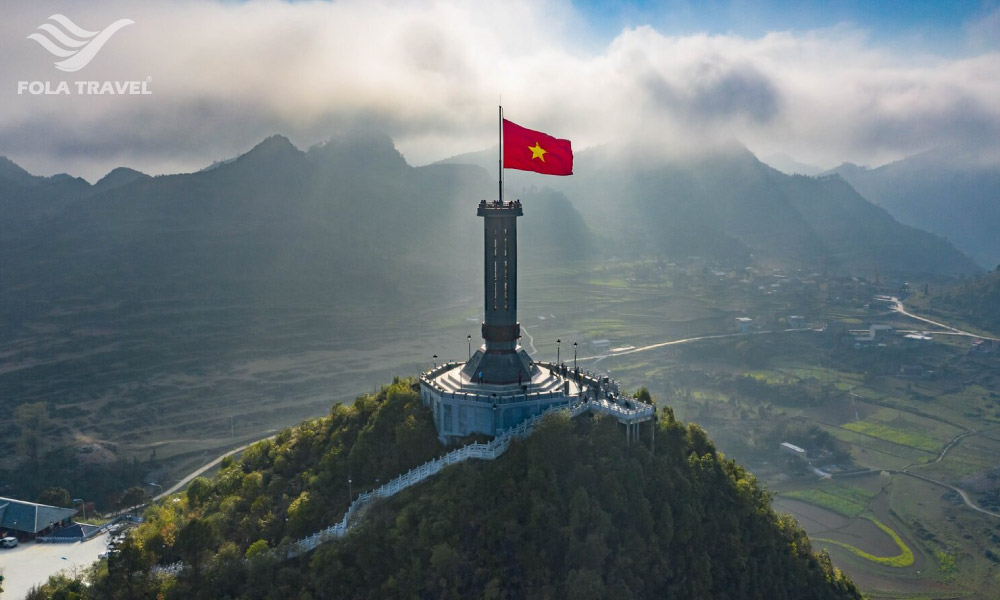
Hoang Su Phi Rice Terraces
The striking feature of Hoang Su Phi District is the intricate network of terraced fields. Layers upon layers of rice terraces like steps drawn on the hills, creating a fascinating natural picture.
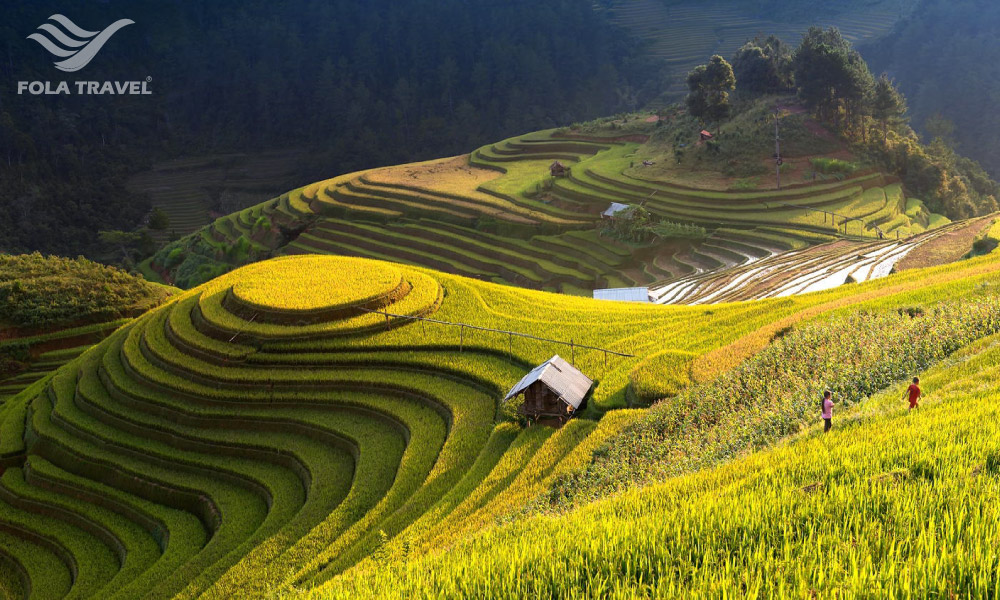
Sung La Valley
Sung La is the most gorgeous valley in the Dong Van Karst Plateau, known by the nickname “the valley where rocks can bloom.” Here, you will feel the harmony of poetic nature and local life.
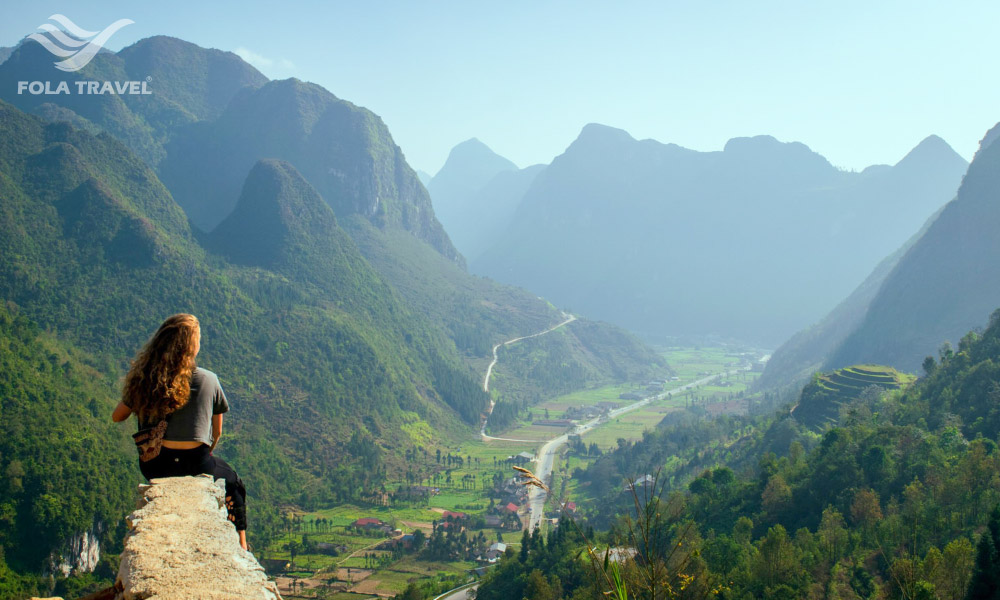
Meo Vac is blessed with the breathtaking beauty of rocky mountains shrouded in clouds, hills of flowers blooming all four seasons, and ethnic villages with intriguing local festivals, making it a popular destination on most Ha Giang tours and packages.
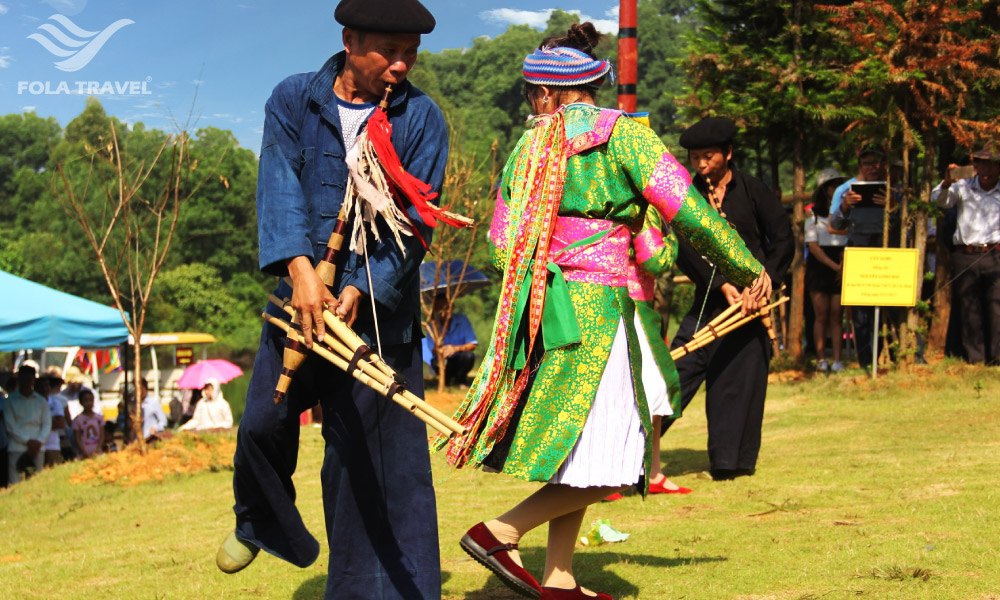
H’mong King Palace
With its distinctive architecture and fascinating historical tales, H’mong King Palace will undoubtedly teach you more about Ha Giang’s culture and customs.

Lung Khuy Cave
About 1000 meters long, Lung Khuy Cave in Quan Ba consists of highly diverse and vivid stalactites and stalagmites, which are like works of art meticulously carved by nature in the heart of Ha Giang.
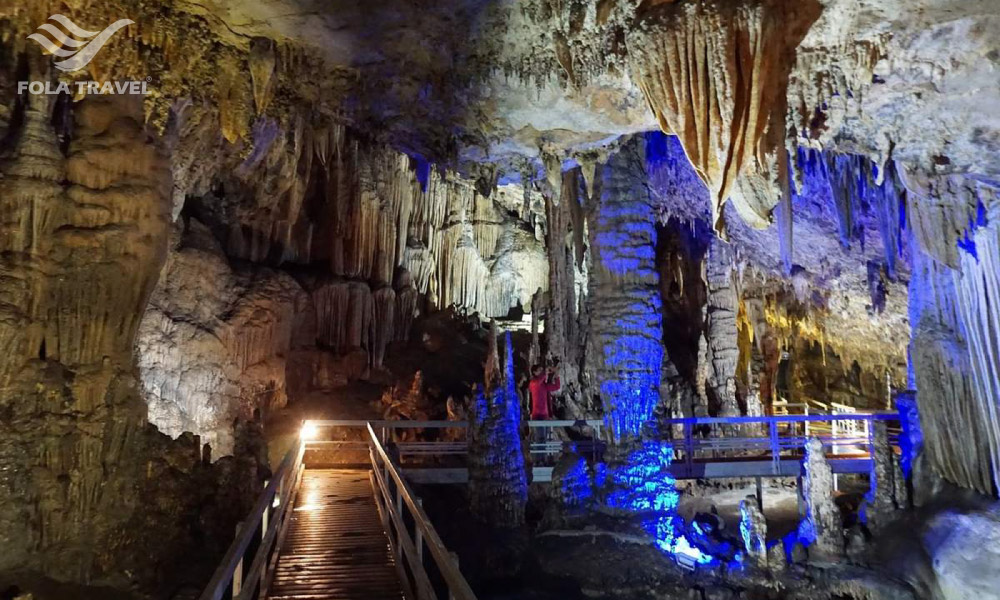
Motorbike ride through Ha Giang Loop
The Ha Giang Loop travels through magnificent mountain passes and ethnic minority neighborhoods with vibrant identities, mouthwatering cuisine, and alluring indigenous culture.

Cloud Chasing
After a long journey climbing the high mountains to “cloud chasing,” you will be presented with the breathtaking scenery of Ha Giang’s hills, valleys, and terraced fields immersed in a sea of colorful clouds.
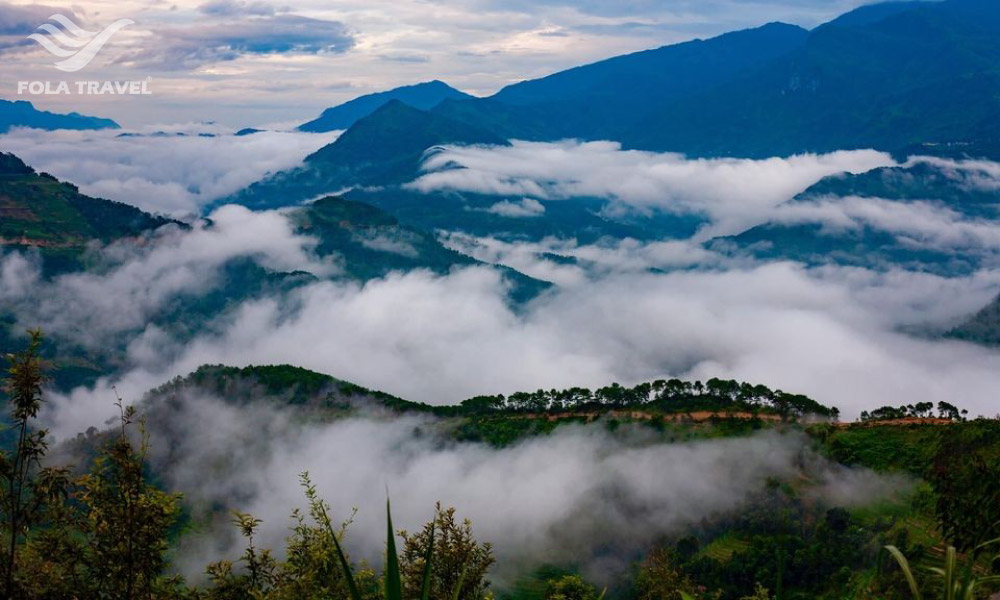
Hiking/ Trekking
Trekking through winding mountain passes, hiking up high mountains, through green pine forests, and rocky trails between rustic villages will give you a unique experience.

Visit flower fields
Taking photos in the middle of the buckwheat flower fields, with the background of Ha Giang mountains and forests, is an activity you should not miss.
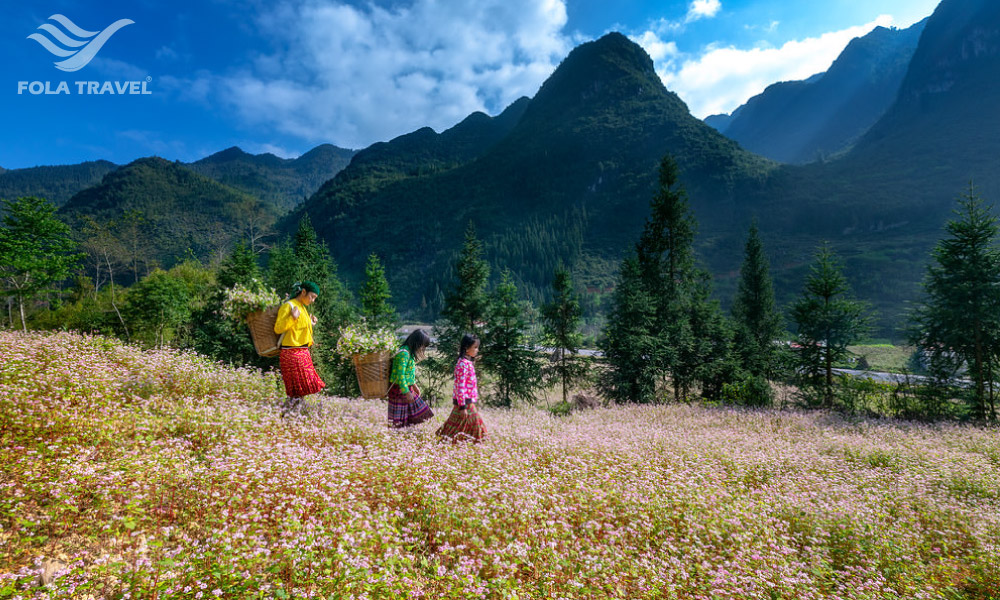
Visit ethnic markets
In addition to buying, selling, and exchanging goods, the market is also a place for cultural exchange among the ethnic people. Dong Van Market, Du Gia Market, and Pho Cao Market… are famous names that tourists seek out to learn more about Ha Giang culture.

Ancient villages
The villages of Nam Dam, Lo Lo Chai, and Thien Huong… impress with their small houses next to each other, preserving the ancients’ most beautiful customs and culture.
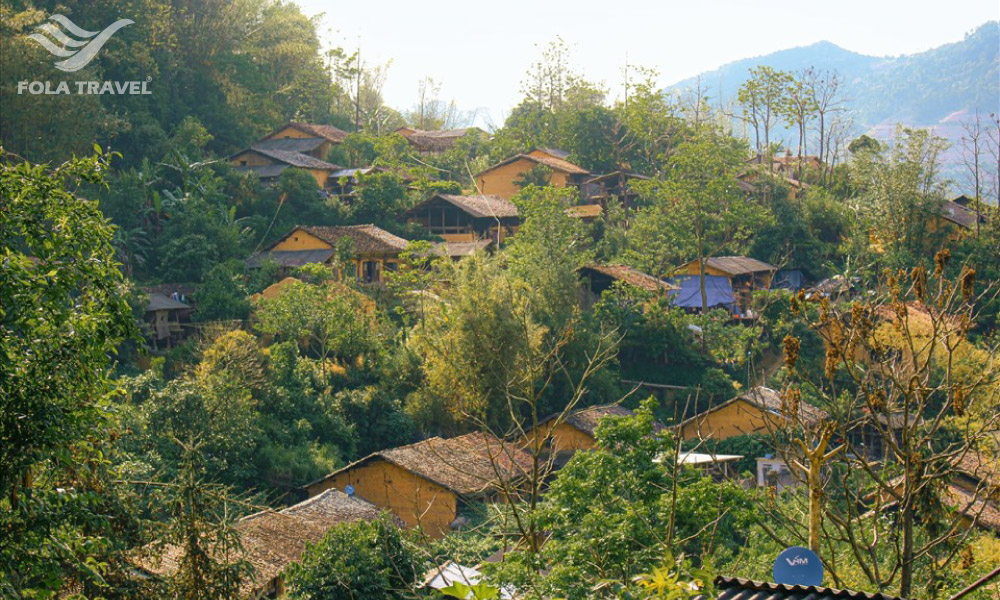
Cafe hopping
The special highlight of Ha Giang coffee shops is the million-dollar scenery of the mountains, forests, and rivers you can never forget!
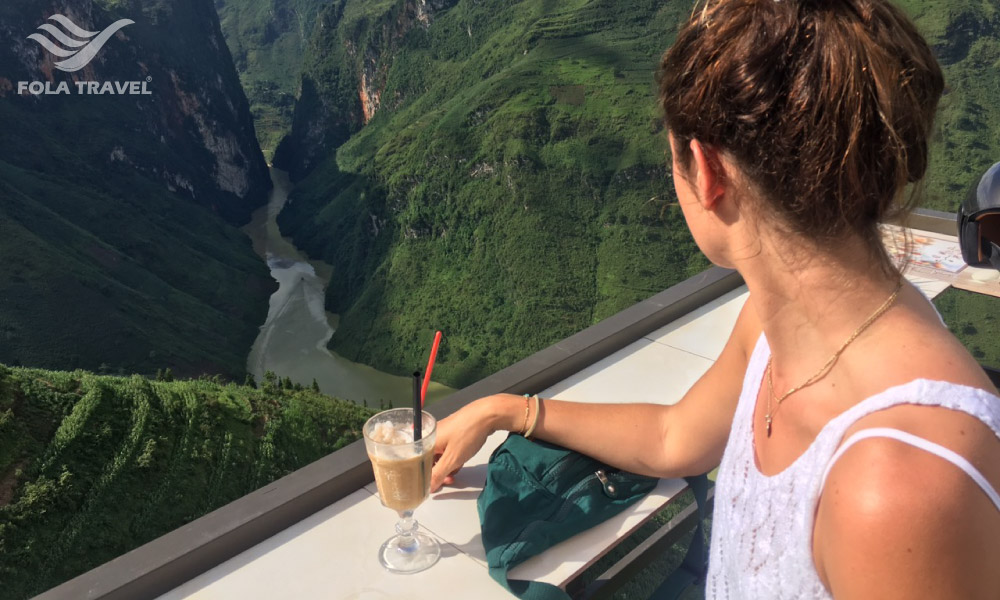
Participate in local festivals
Khau Vai Love Market Festival, Buckwheat Flower Festival, and Gau Tao Festival are some popular names among tourists in Ha Giang. These celebrations have lively performances, a vibrant atmosphere, and exciting local games!

Ha Giang impresses not only with its captivating natural beauty but also with its unique and delicious specialties.
Dong Van Steamed Rolled Rice Pancakes (Banh Cuon Dong Van)
Dong Van steamed rice rolls are a simple, rustic breakfast dish with many flavors, perfect for starting a new, exciting day!

Bac Me Bamboo-tube Rice (Com Lam Bac Me)
This unique dish attracts visitors with the faint but irresistible light fragrance of bamboo and fresh rice, creating a wonderful experience inside your mouth!
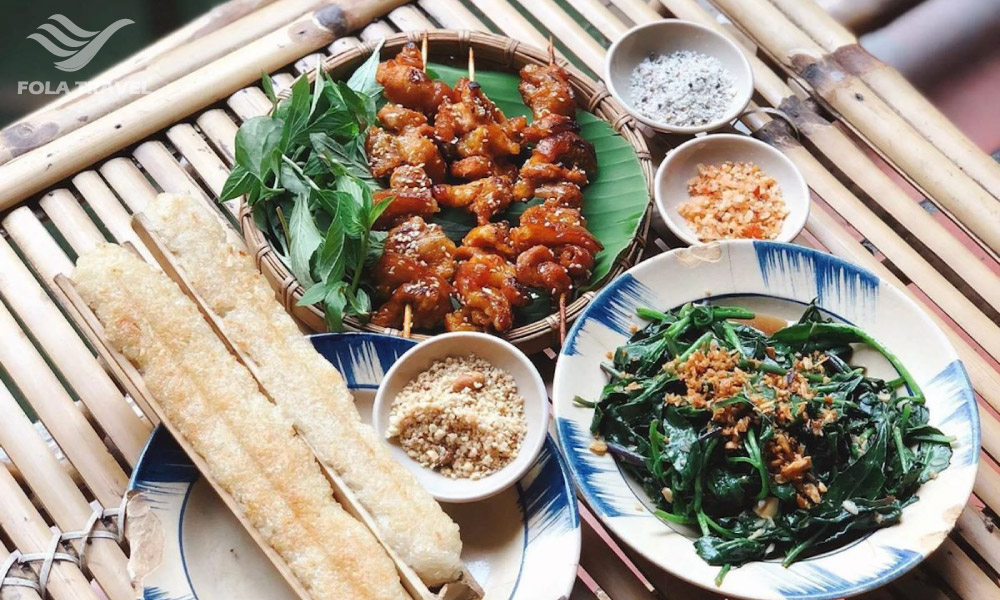
Meat Soup (Thang Co)
A hot bowl of Thang Co makes a strong impression with its distinct aroma from the plethora of highland spices, causing your taste buds to explode as soon as you try it!
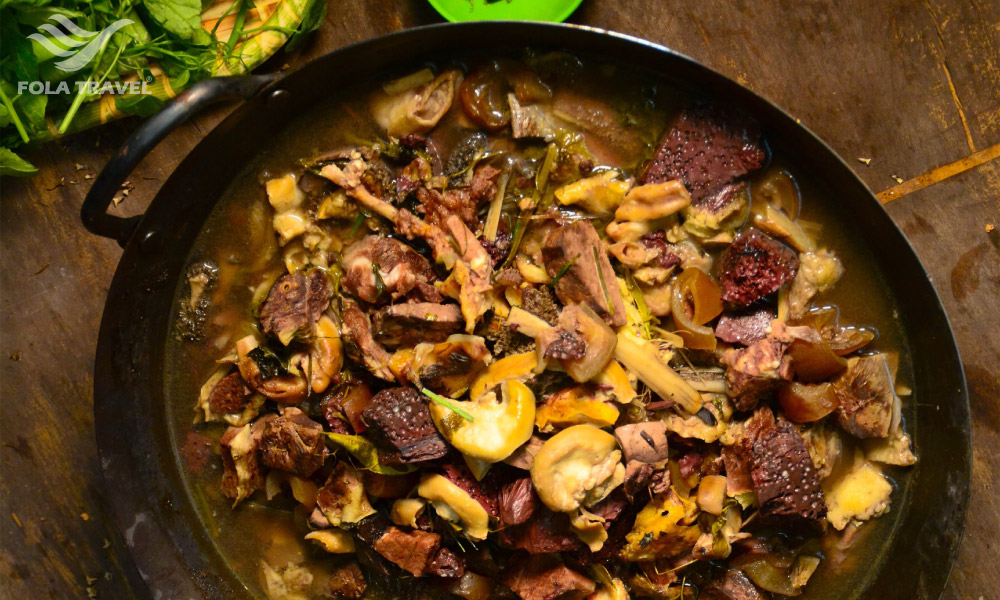
Dried Buffalo Meat
Dried buffalo meat requires an elaborate process involving a lot of ingredients and time to achieve that unique and delectable flavor. This is a snack you should not miss when visiting Ha Giang!

Five-color Sticky Rice
Five-color sticky rice is a traditional specialty of the Ha Giang mountains. The sticky rice is chewy, delicious, and very filling, suitable for eating on the go!
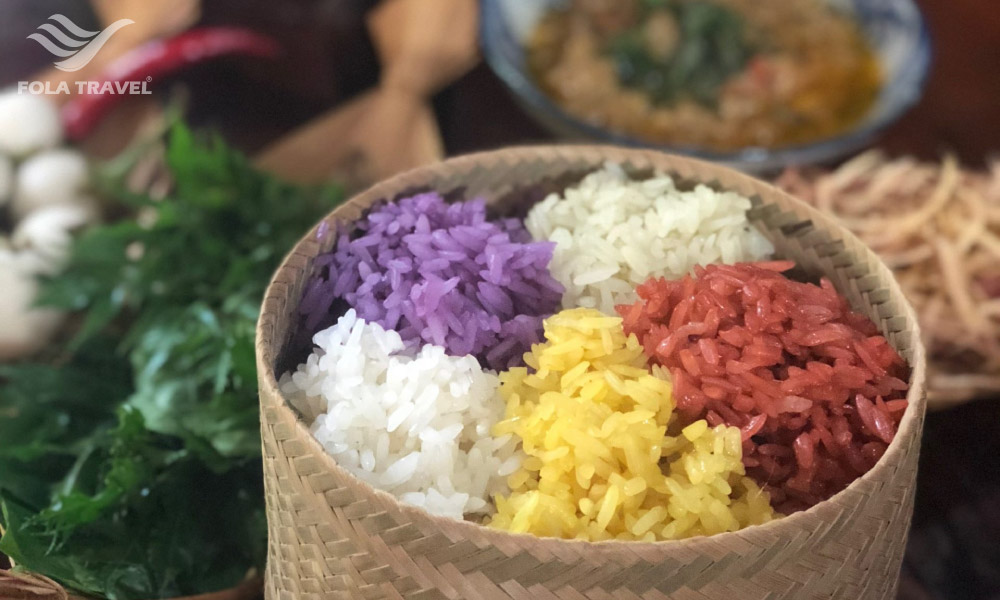
Buckwheat Flower Cakes
Buckwheat flower cake is a familiar snack for Ha Giang locals, with a nutty taste and lovely, delicate aroma. If you can visit Ha Giang’s traditional markets, remember to try this snack!
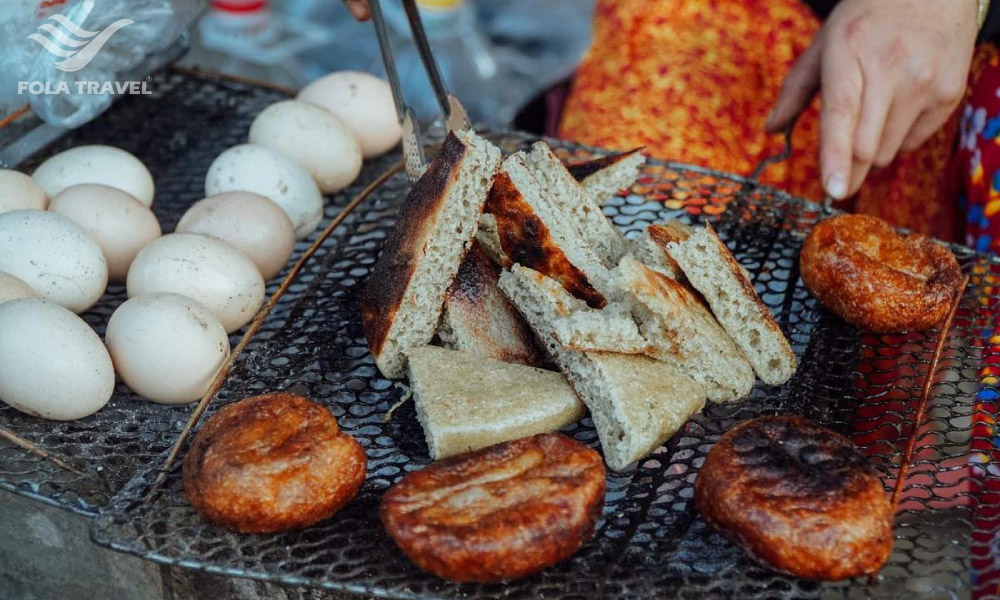
Au Tau Porridge
Au Tau porridge is the most famous specialty of the Mong people in Ha Giang. A bowl of hot porridge with soft stewed pork leg, rich minced meat, and fragrant herbs brings an amazing and irresistible taste.
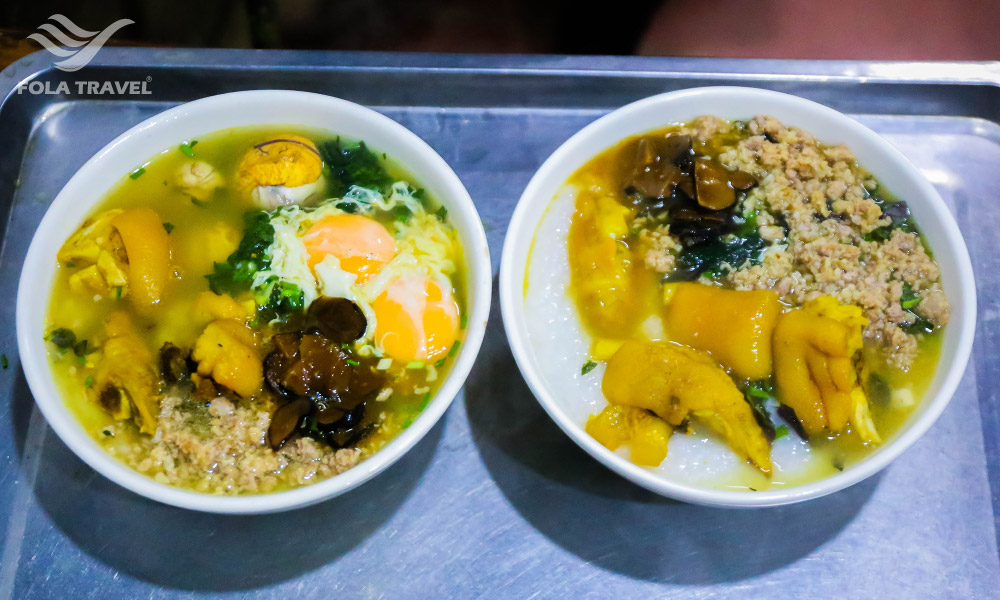
Thang Den
Thang Den is a unique sweet treat of the Ha Giang highlands, suitable for enjoying in the cold winter. The soft Thang Den rice balls with sweet syrup will warm your whole body immediately!
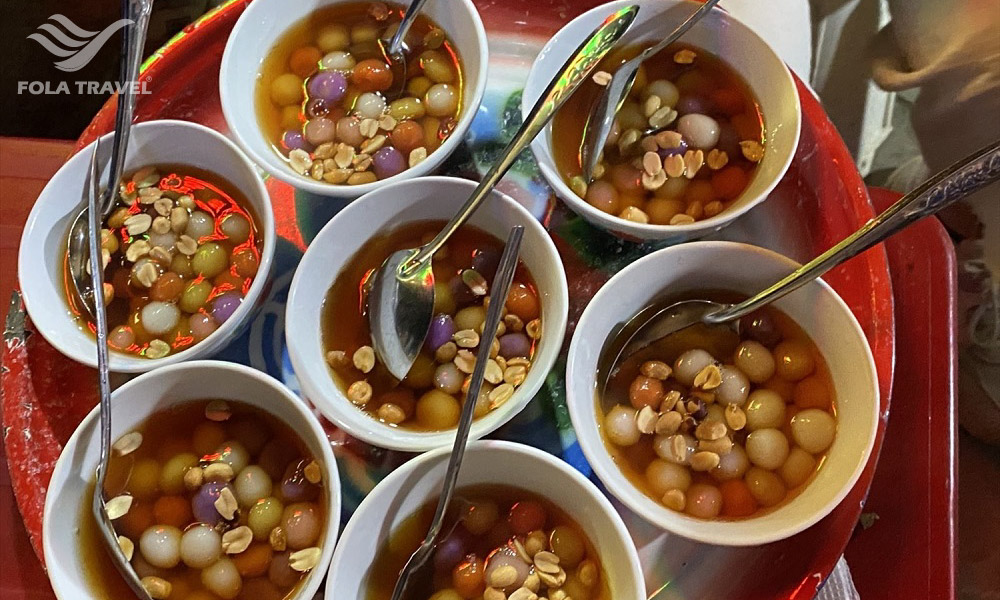
Corn Wine
Corn wine is considered a spiritual drink of Ha Giang’s Mong ethnicity. Taking a sip of the spicy and sweet wine, you can taste the love and care of the winemaker!
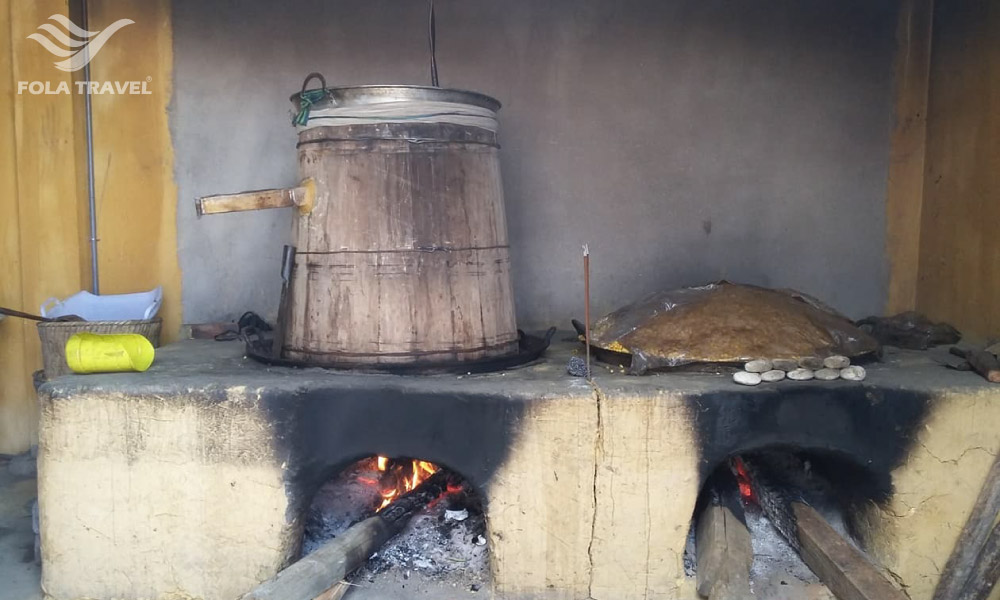
How many days can you spend here is the correct answer. If you only have 1 or 2 days to explore Ha Giang, a short tour around the ethnic villages of Ha Giang is a great way to relax in the wonderful nature and learn about local culture.
For guests interested in the Ha Giang Loop or other adventurous activities here, you need a minimum of 3 days for a worthy experience.
Ha Giang is a wonderful place to buy gifts for your loved ones back home.
The most popular choices must be Ha Giang specialties. Dried buffalo meat, Ha Giang sausage, Quan Ba seedless persimmons, and Ancient Shan Tuyet tea are some beloved options you can look into.
For guests who fall in love with the ethnic culture of Ha Giang locals, you can buy textiles and clothing in the signature highland style to reserve a part of the place whenever you go!
Yes. Ha Giang is a safe place to travel solo as there is mostly nature and friendly locals. However, the roads of Ha Giang have many twists and turns that, if you are not familiar with them, can be dangerous. Fola Travel advises you to check out our Ha Giang trips, which are carefully planned and have experienced tour guides to ensure your comfort and safety.
SHARE YOUR OPINION